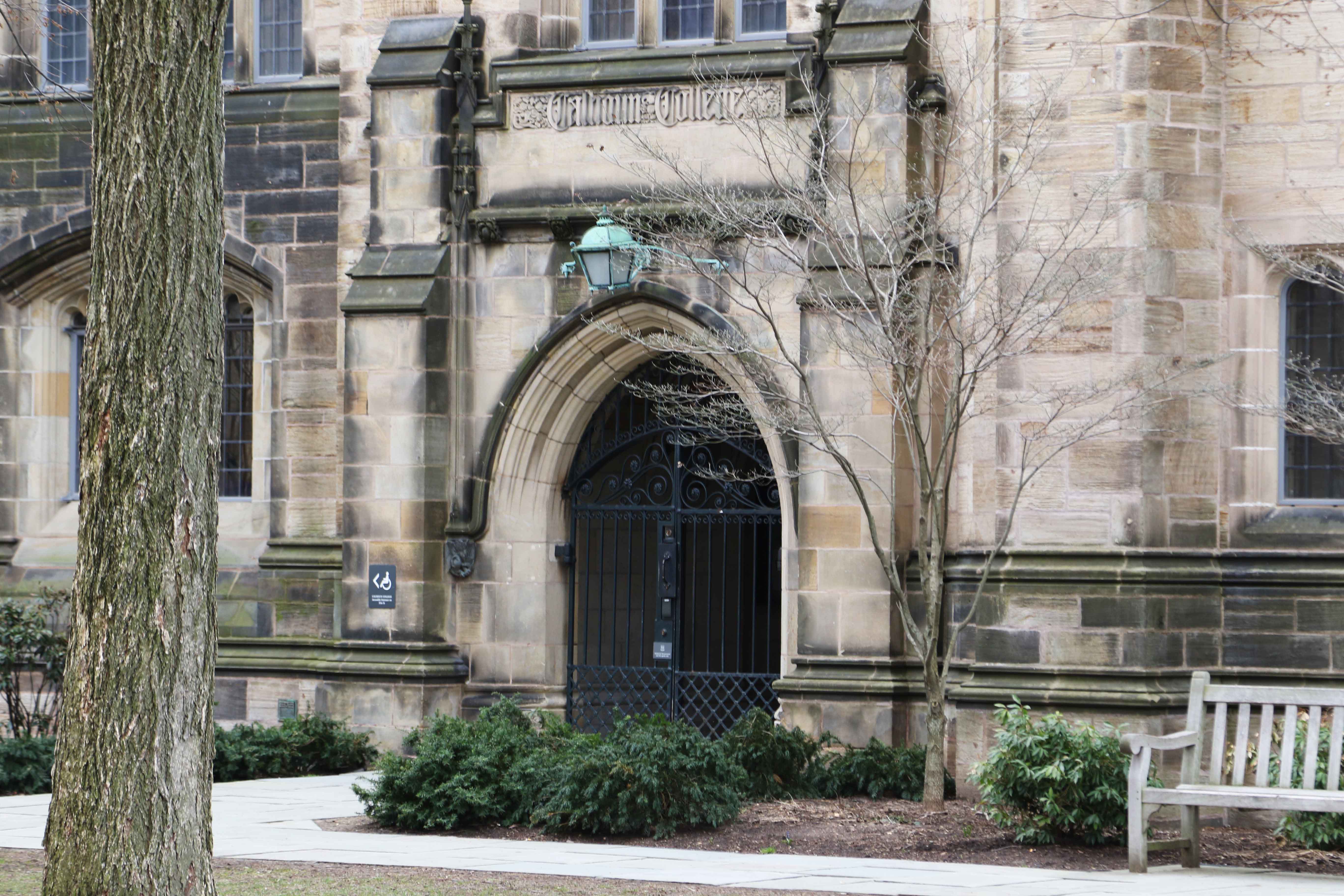
As campus erupted in protests last spring in the wake of Yale’s April decision not to rename Calhoun College, University President Peter Salovey discussed the possibility of immediately reversing the decision in meetings with other high-ranking administrators, according to Salovey and a member of the University cabinet.
Yale officials considered the possible reversal in a cabinet meeting that took place late last spring, shortly after the April naming announcement sparked student and faculty protests. And while neither Salovey nor his cabinet has final authority over naming — that power rests with the Yale Corporation — the new details about the cabinet’s deliberations last spring offer a window into the mindset of the administration during one of the most tumultuous periods in Yale’s recent history.
School of Management Dean Edward Snyder told the News that administrators “verbalized” the option of an immediate reversal at a meeting of the full cabinet, an advisory body founded by Salovey consisting of Yale’s provost, academic deans and vice presidents.
“There were obvious negatives with that, but going into those discussions, given that the question was back on the table, that was an obvious option,” Snyder said.
In an interview with the News last week, Salovey confirmed Snyder’s account, but said he was always concerned that an immediate reversal would leave two pressing issues unresolved: the notion that a name change would “erase history” and the possibility that it might also establishing a slippery slope that would imperil the names of other buildings on campus.
“In the discussion that unfolded in May, a lot of different ideas were expressed at all levels … including simply reversing the decision without further process,” Salovey said. “But my view, and I felt it strongly, is we needed to address those two fundamental questions.”
In August 2016, Salovey announced the creation of the Committee to Establish Principles on Renaming, a team of faculty members, alumni, students and staff members whose report on general guidelines for future naming decisions paved the way for Calhoun’s eventual renaming in February. Snyder said that Salovey first suggested forming the CEPR at a spring meeting of the Cabinet Steering Committee — a subcommittee within the cabinet designed to respond to fast-moving campus crises — that was held after the full cabinet discussed the possibility of an immediate reversal.
Salovey created the steering committee in March 2016 after some members of the cabinet complained that they were excluded from the development of the diversity and inclusion initiatives that Yale had unveiled the previous fall. According to Snyder, the cabinet-level discussion about naming was an improvement on the administrative process that led up to the fall initiatives.
“[Salovey] brought his thinking to the cabinet and the steering committee in more depth, so there was good process there. He laid out possible options,” Snyder said. “There was a different process at that stage, compared to some other prior decisions.”
The CEPR issued a report in December calling on Yale to consider multiple layers of historical context in naming decisions. In response, Salovey created a three-person task force to apply those general naming principles to the specific case of Calhoun.
The task force recommended changing the name of the college, and the Corporation voted to accept that recommendation at its most recent meeting in February. Calhoun will be formally renamed in honor of the pioneering computer scientist Grace Murray Hopper GRD ’34 on July 1.
History professor David Blight, a member of the CEPR, said Yale ultimately benefited from the extended timeline of the naming process.
“If you’d asked me back then, I would’ve said just do it — reverse it, choose a new name, don’t put the community through it,” Blight said. “On the other hand, it really did serve an important purpose. It gives a legitimacy, because otherwise the structure would’ve been: ‘Oh, I made a mistake, mea culpa, changed my mind.’ Now Yale can show that it does believe in a kind of scholarly process.”
But Rishi Mirchandani ’19, who supported the name change, said Salovey’s decision to establish the renaming committee rather than seek an immediate reversal represented a disservice to student activists. And he echoed the widespread belief that Salovey created the CEPR with the ultimate purpose of renaming Calhoun.
“It was very clear from the start that there was no intellectual or moral justification for keeping the Calhoun name, so I feel like the document was produced to just give that reversal an air of legitimacy,” Mirchandani said. “Even though the document itself is valuable, I don’t think that the motivation behind its production was genuine.”
The members of the cabinet steering committee are Snyder, Dean of the School of Music Robert Blocker, Graduate School Dean Lynn Cooley, Vice President for Communications Eileen O’Connor, General Counsel Alex ander Dreier LAW ’95 and Provost Ben Polak.







